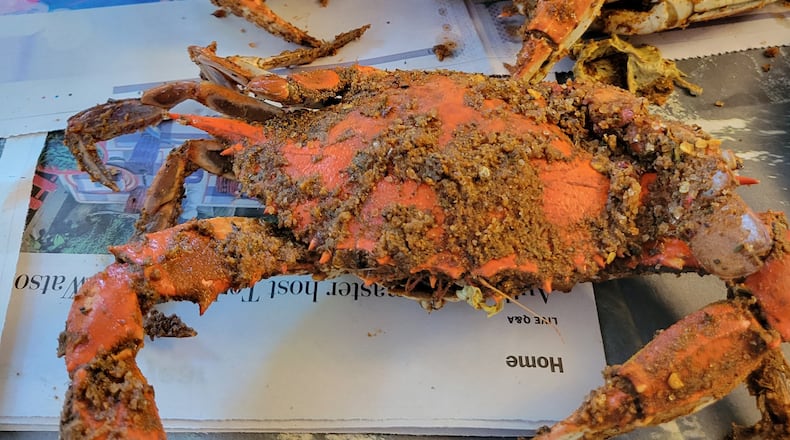The crabs are obtained from a waterman who catches them in the Chesapeake Bay and delivers them to a nondescript suburban shack, where they are steamed in a mess of pepper chunks and Old Bay.
The steamed crabs are dumped on a table covered with newspaper, normally The Baltimore Sun. Instead of cutlery, the preferred utensils are mallets, nutcrackers, and fingers.
Seafood-like lobsters are also eaten with fingers, but they are less messy to eat because they are steamed in “clean” water, whereas Maryland crabs are steamed in pepper chunks and Old Bay.
Old Bay Seasoning is a blend of herbs and spices including several types of pepper, named for the Old Bay Line, a steamship company that once took passengers through the Chesapeake Bay between Baltimore and Norfolk. Old Bay was originally made by the Baltimore Spice Company, founded in 1939 by refugees from Nazi Germany. Ironically, a Jewish man escaping the Holocaust invented a spice used to cook non-kosher seafood.
Old Bay was sold in 1990 to McCormick, which is headquartered in the Baltimore area. McCormick’s original factory in Baltimore’s Inner Harbor sends spice aromas over the area, but McCormick’s headquarters are now in a Baltimore suburb.
Steamed crabs are also much messier to eat than lobster because some innards are inedible. Gills, lungs and other innards must be removed (by hand) because they were filtering waste when the crab was swimming in the Chesapeake Bay.
Everyone grabs a crab and starts to dismantle it. First, the claws and spindly legs are removed. Most people set them aside for later.
The next step is removal of the large back shell. To do so, one must know to lift a Y-shaped tab on the underside of the crab. Under the tab is a cavity into which one sticks a couple of fingers in order to pull away the bright orange back.
Some of the bits now revealed, including gills and lungs, are scraped away and tossed in a pile on the newspaper along with the shells. After the innards are discarded, the thin inner shell of the crab easily breaks in half along a scored line.
The backfin crab meat is dug out with fingers from all of the nooks and crannies inside the two thin shell pieces. Unlike lobster, crabmeat goes directly into one’s mouth, not dipped in a sauce or melted butter.
A group of diners born and raised in Baltimore eating steamed crabs is an exotic anthropological sight to behold. Native Baltimoreans kindly prepare crabs for squeamish family members raised elsewhere.
MOON Co-op is Oxford’s consumer-owned full-service grocery, featuring natural, local, organic, sustainable and Earth-friendly products. The store, located at 516 S. Locust St. in Oxford, is open to the public every day. Check it out online at www.mooncoop.coop.
About the Author
